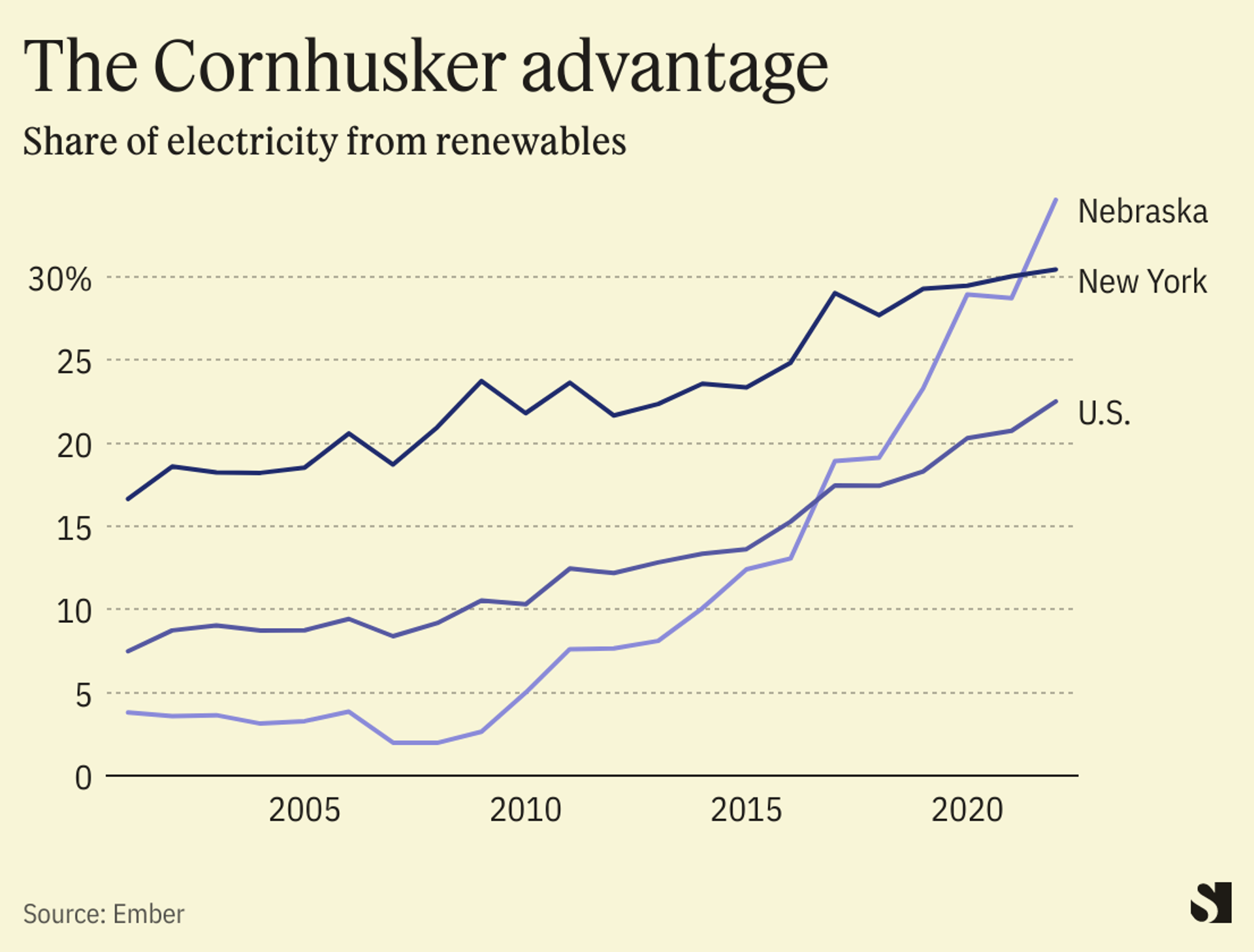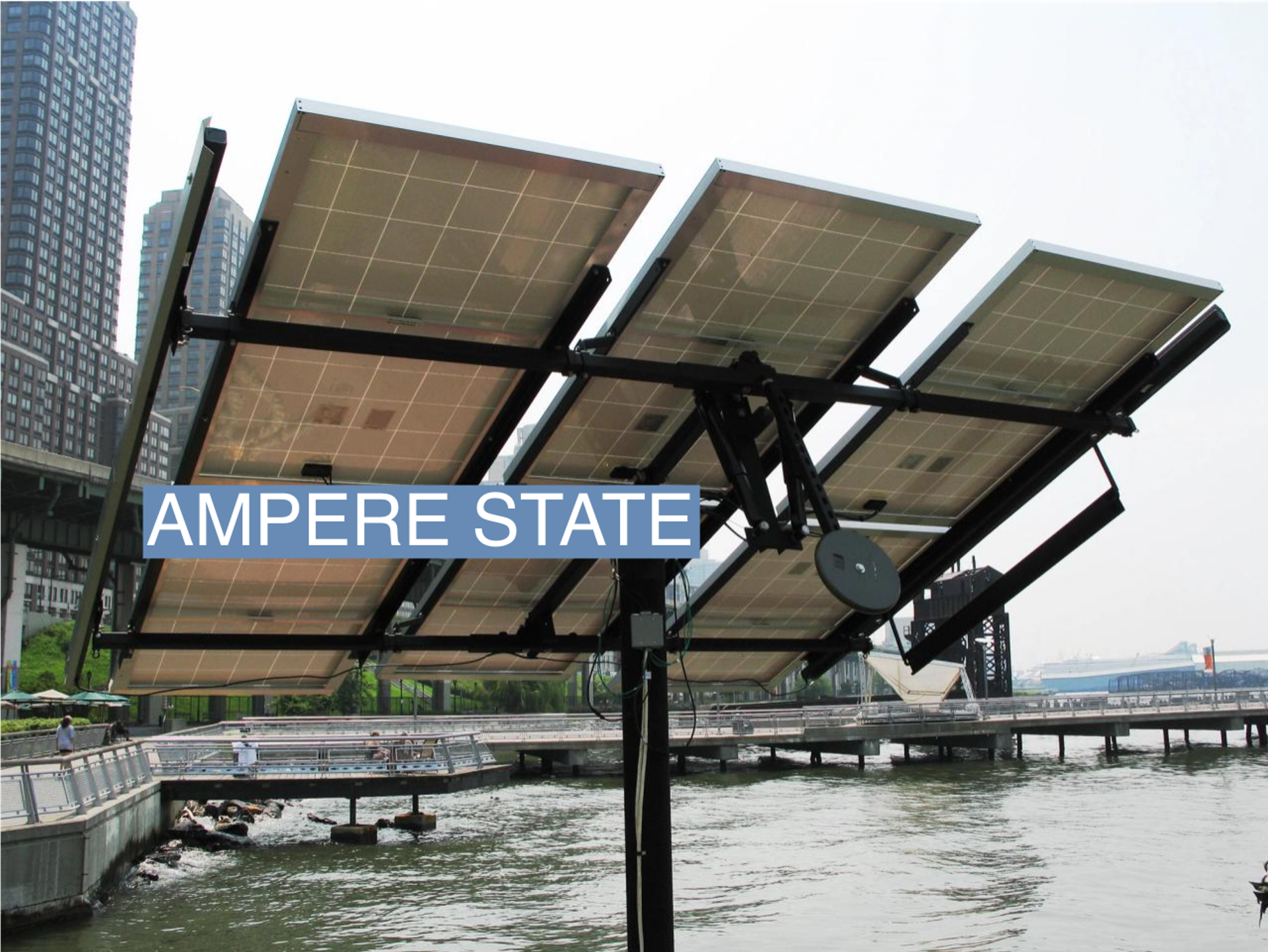The News
New York state lawmakers passed legislation last week mandating the state-run electric utility to eliminate its use of fossil fuels by 2030, requiring the largest public utility in the U.S. to build more renewable energy if private utilities don’t do enough to meet the state’s 70% renewable electricity target by the end of the decade.
The law, which takes advantage of a tax change in the U.S. Inflation Reduction Act, fulfills a long-sought objective of climate activists, and lays a blueprint for how public utilities can play a more proactive role in decarbonizing the power sector.
Tim’s view
The IRA is recalibrating the balance of power between public utilities, which supply about 14% of Americans with electricity, and the privately-owned companies that serve most of the rest.
Private investment in energy infrastructure is soaring, but public utilities were mostly priced out of the market because pre-IRA, tax credits for utility-scale wind and solar were only useful for entities with big federal income tax bills; public utilities generally have a relatively small customer base and are exempt from federal income taxes. As a result, only about 2% of the power generation owned by public utilities nationwide is non-hydropower renewables, according to the American Public Power Association, an industry group.
The IRA, however, allows tax-exempt entities to claim the value of solar and wind tax credits as cash, making renewables much more affordable for public utilities, and driving faster change.
Public utilities can dictate more ambitious clean energy targets without worrying about profit for shareholders, and coordinate directly with infrastructure planning agencies to map out transmission lines well in advance, said Johanna Bozuwa, executive director of the Climate and Community Project, a progressive think tank. They can also include equity provisions in their renewable energy targets, such as requiring the use of unionized labor, as the New York law does, or ensuring that low-carbon power is available to low-income communities. Many of the top privately-owned utilities, meanwhile, lobby against climate policy.
Bozuwa’s group advocates replicating the New York approach at a federal level, which would require the creation of new interstate public power utilities in the vein of the Tennessee Valley Authority. That needn’t cost taxpayers much, Bozuwa said. The TVA is self-financing, and in general public utilities have lower rates than private ones. But it would still likely be a heavy lift politically, given that the Biden administration has so far been unable to rally support for a federal clean electricity mandate.
Room for Disagreement
Large-scale public intervention may not be needed to decarbonize the U.S. power sector. The sector’s emissions are at their lowest point in 40 years, even though electricity consumption has increased 73% in that time, according to the trade group that represents private utilities. That’s not fast enough to meet the Biden administration’s goal of 100% clean electricity by 2035. But the adoption of renewables by private utilities is accelerating as their cost continues to fall.
The View From Nebraska

The public utility model has worked well for Nebraska, the only state in which all power is delivered by public utilities. Nebraska has the country’s most reliable electricity and some of its cheapest. In 2021, it became the first Republican state to adopt a goal to decarbonize its grid by 2050. Renewable energy is popular in the state, and because the boards of its utilities are publicly elected, they have an incentive to give the people what they want. Wind and solar projects built in Nebraska this decade are projected to deliver more than $1.4 billion in revenue to the state economy in the form of land lease payments, tax revenue, and jobs, according to an analysis by the Rocky Mountain Institute.
Notable
- Cities in Maine, Michigan, and elsewhere are preparing to vote this year on whether to replace their existing private electric utilities with public or nonprofit ones. One factor raising the tide of support for public utilities is that they’re usually more amenable to rooftop solar, which eats into the traditional private utility business model, Inside Climate News reported.
